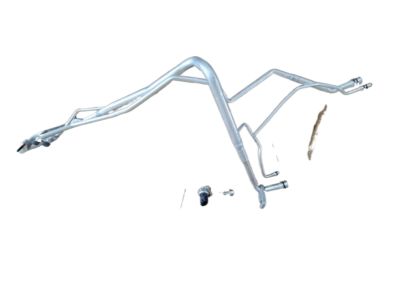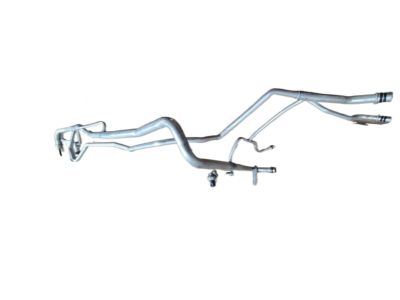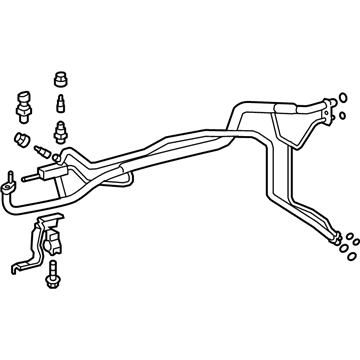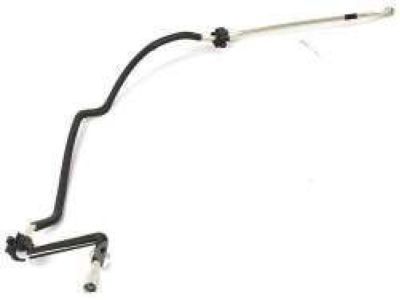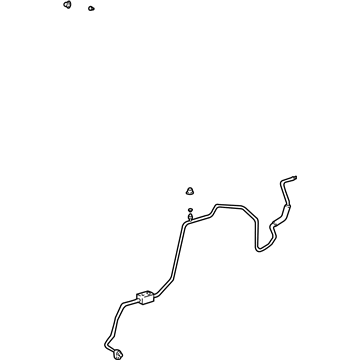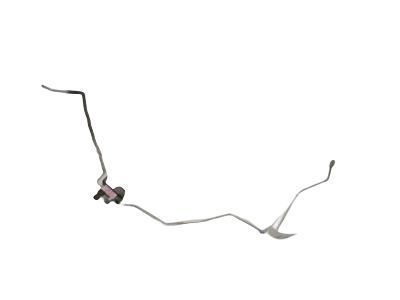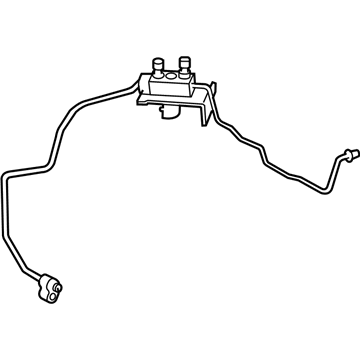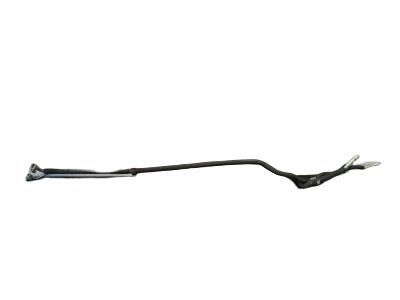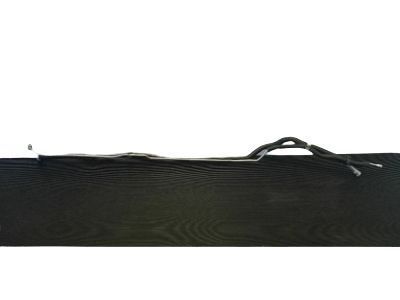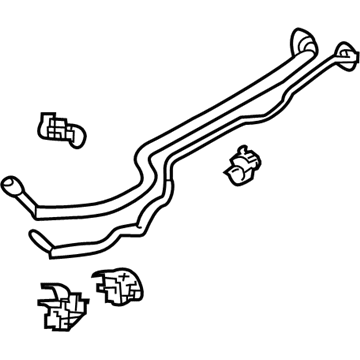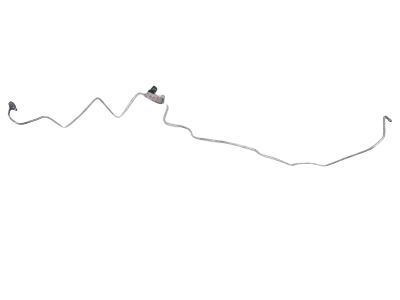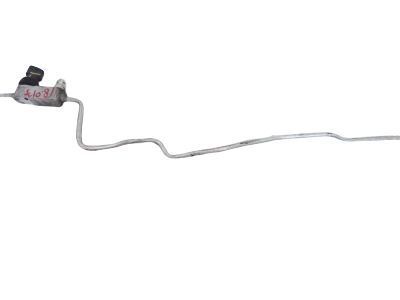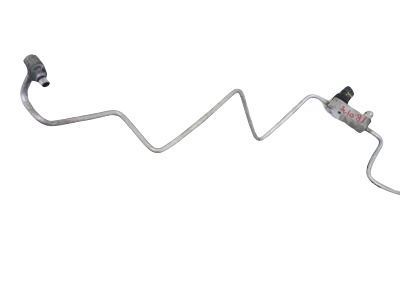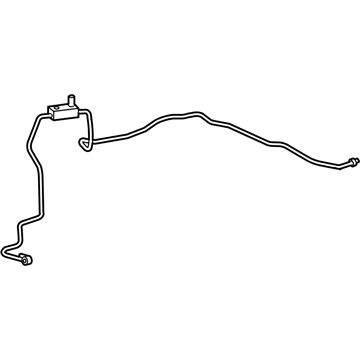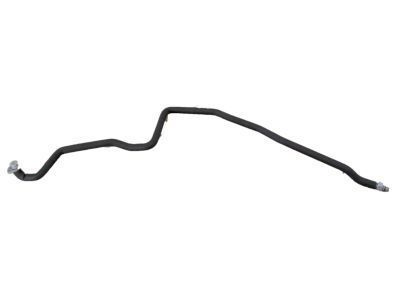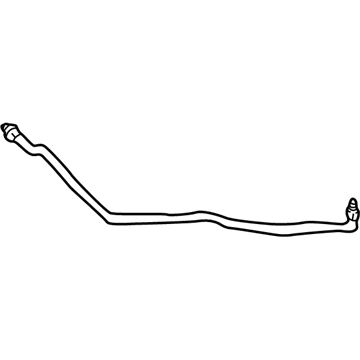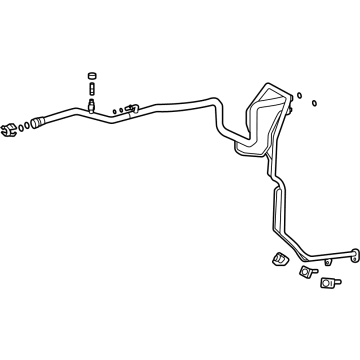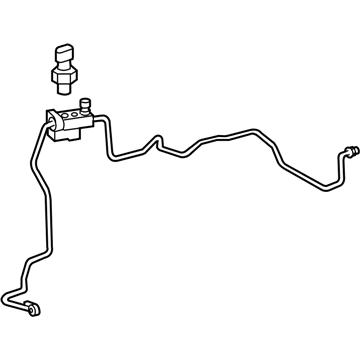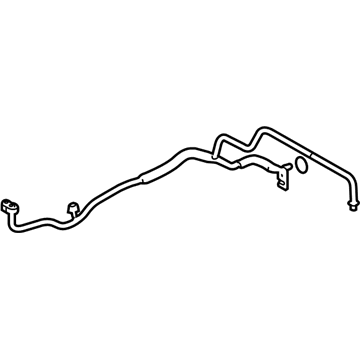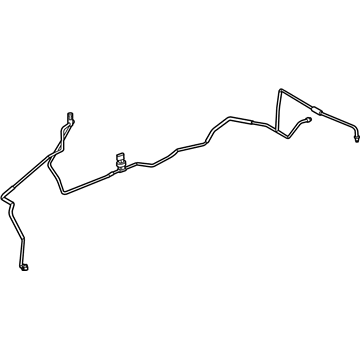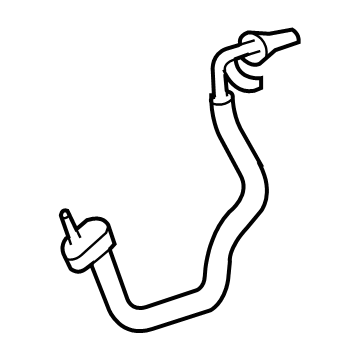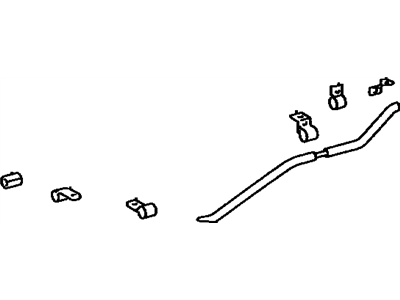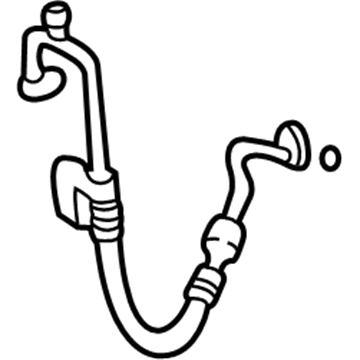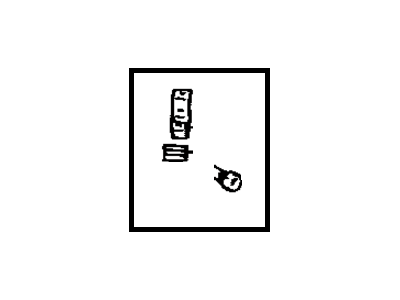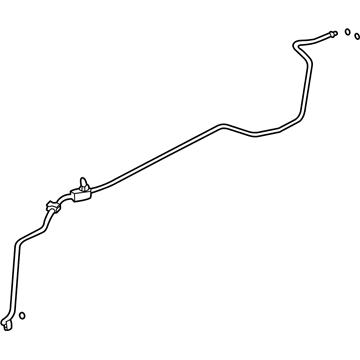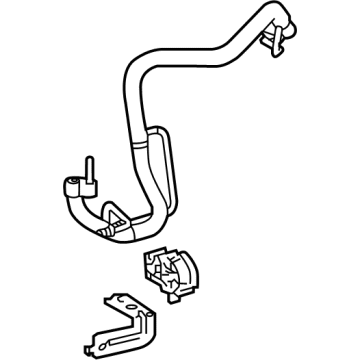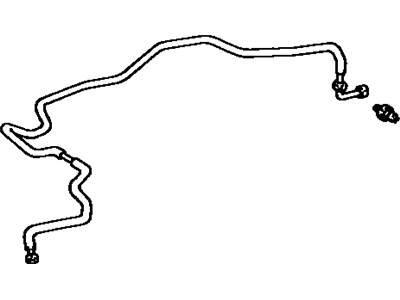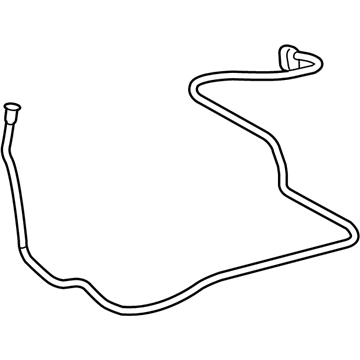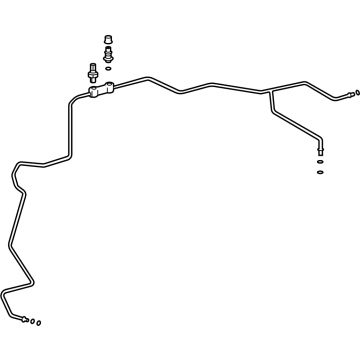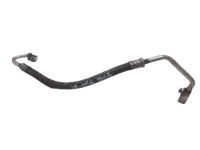×
ToyotaParts- Hello
- Login or Register
- Quick Links
- Live Chat
- Track Order
- Parts Availability
- RMA
- Help Center
- Contact Us
- Shop for
- Toyota Parts
- Scion Parts
My Garage
My Account
Cart
OEM Toyota A/C Hose
Air Conditioning Hose- Select Vehicle by Model
- Select Vehicle by VIN
Select Vehicle by Model
orMake
Model
Year
Select Vehicle by VIN
For the most accurate results, select vehicle by your VIN (Vehicle Identification Number).
1114 A/C Hoses found
 Product Specifications
Product Specifications- Other Name: Tube&Accessory Assembly; A/C Refrigerant Liquid Hose; A/C Hose; Tube & Accessory Assembly, Air Conditioner

Toyota Pipe
Part Number: 88706-42270$237.07 MSRP: $338.48You Save: $101.41 (30%)Ships in 1-3 Business DaysProduct Specifications- Other Name: Tube Sub-Assembly, Liquid, F; A/C Pipe; A/C Refrigerant Liquid Hose; A/C Hose; Pipe, Cooler Refrigerant Liquid, A
- Manufacturer Note: MAKER OPTION

Toyota Liquid Line
Part Number: 88706-42400$313.72 MSRP: $447.93You Save: $134.21 (30%)Ships in 1-3 Business DaysProduct Specifications- Other Name: Tube Sub-Assembly, Liquid, F; A/C Refrigerant Liquid Hose; A/C Hose; Pipe Sub-Assembly, Liquid

Toyota Tube Assembly
Part Number: 88840-08150$202.93 MSRP: $289.74You Save: $86.81 (30%)Ships in 1-3 Business DaysProduct Specifications- Other Name: Accessory Assembly, Air; A/C Refrigerant Liquid Hose; A/C Hose; Tube & Accessory Assembly, Air Conditioner
- Manufacturer Note: NO.1

Toyota Liquid Line
Part Number: 88710-06200$192.68 MSRP: $275.10You Save: $82.42 (30%)Ships in 1-3 Business DaysProduct Specifications- Other Name: Tube&Accessory Assembly; A/C Refrigerant Liquid Hose; A/C Hose; Tube & Accessory Assembly, Air Conditioner

Toyota Pipe, Cooler Refrigerant Suction, A
Part Number: 88717-6A220$300.33 MSRP: $428.79You Save: $128.46 (30%)Ships in 1-3 Business DaysProduct Specifications- Other Name: Tube, Suction; A/C Refrigerant Liquid Hose; A/C Hose
Toyota Liquid Line
Part Number: 88710-08120$577.70 MSRP: $846.64You Save: $268.94 (32%)Ships in 1-3 Business DaysProduct Specifications- Other Name: Tube&Accessory Assembly; A/C Refrigerant Liquid Hose; A/C Hose; Tube & Accessory Assembly, Air Conditioner
Toyota A/C Tube
Part Number: 88710-0E440$423.00 MSRP: $619.91You Save: $196.91 (32%)Ships in 1-3 Business DaysProduct Specifications- Other Name: Tube&Accessory Assembly; A/C Refrigerant Liquid Hose; A/C Hose; Pressure Line Assembly; Tube & Accessory Assembly, Air Conditioner
Toyota Liquid Line
Part Number: 88710-33320$255.71 MSRP: $365.09You Save: $109.38 (30%)Ships in 1-3 Business DaysProduct Specifications- Other Name: Tube&Accessory Assembly; A/C Refrigerant Liquid Hose; A/C Hose; Tube Assembly, Air Conditioner
Toyota Suction Pipe
Part Number: 88717-0E100$272.71 MSRP: $389.37You Save: $116.66 (30%)Ships in 1-3 Business DaysProduct Specifications- Other Name: Tube, Suction; A/C Pipe; A/C Refrigerant Liquid Hose; A/C Hose; Pipe, Cooler Refrigerant Suction, B
- Replaces: 88717-48080
Toyota Liquid Line
Part Number: 88710-0E360$216.10 MSRP: $308.54You Save: $92.44 (30%)Ships in 1-3 Business DaysProduct Specifications- Other Name: Tube&Accessory Assembly; A/C Refrigerant Liquid Hose; A/C Hose; Pipe, Cooler Refrigerant Liquid, A
Toyota Suction Pipe
Part Number: 88710-0C700$317.10 MSRP: $452.75You Save: $135.65 (30%)Ships in 1-3 Business DaysProduct Specifications- Other Name: Tube&Accessory Assembly; A/C Pipe; A/C Refrigerant Liquid Hose; A/C Hose; Tube & Accessory Assembly, Air Conditioner
Toyota Discharge Line
Part Number: 88705-17032$185.81 MSRP: $265.30You Save: $79.49 (30%)Ships in 1-3 Business DaysProduct Specifications- Other Name: Tube Sub-Assembly, Discharge; A/C Refrigerant Liquid Hose; A/C Hose
- Replaces: 88705-17031, 88705-17030
Toyota Discharge Hose
Part Number: 88703-48050$178.82 MSRP: $255.31You Save: $76.49 (30%)Ships in 1-3 Business DaysProduct Specifications- Other Name: Hose Sub-Assembly, Discharge; A/C Refrigerant Discharge Hose; A/C Refrigerant Liquid Hose; A/C Hose; Hose, Cooler Refrigerant Discharge
Toyota Discharge Line
Part Number: 88705-17120$183.93 MSRP: $262.61You Save: $78.68 (30%)Ships in 1-3 Business DaysProduct Specifications- Other Name: Tube Sub-Assembly, Discharge; A/C Refrigerant Liquid Hose; A/C Hose
Toyota Liquid Line
Part Number: 88710-48170$194.66 MSRP: $277.93You Save: $83.27 (30%)Ships in 1-3 Business DaysProduct Specifications- Other Name: Tube&Accessory Assembly; A/C Refrigerant Liquid Hose; A/C Hose; Pipe, Cooler Refrigerant Liquid, A
Toyota Suction Line
Part Number: 88710-0C730$294.15 MSRP: $419.98You Save: $125.83 (30%)Ships in 1-3 Business DaysProduct Specifications- Other Name: Tube&Accessory Assembly; A/C Pipe; A/C Tube; Tube & Accessory Assembly, Air Conditioner
Toyota A/C Line
Part Number: 88706-20061$216.27 MSRP: $308.78You Save: $92.51 (30%)Ships in 1-3 Business DaysProduct Specifications- Other Name: Tube Sub-Assembly, Liquid, F; A/C Refrigerant Liquid Hose; A/C Hose; Pipe Sub-Assembly, Liquid
Toyota Front A/C Line, Driver Side
Part Number: 88717-48260$232.64 MSRP: $332.16You Save: $99.52 (30%)Ships in 1-3 Business DaysProduct Specifications- Other Name: Tube, Suction; A/C Hose; Pipe, Cooler Refrigerant Suction, C
- Position: Driver Side
Toyota Liquid Line
Part Number: 88710-0E610$188.02 MSRP: $268.45You Save: $80.43 (30%)Ships in 1-3 Business DaysProduct Specifications- Other Name: Tube&Accessory Assembly; A/C Refrigerant Liquid Hose; A/C Hose; Pipe, Cooler Refrigerant Liquid, A
| Page 1 of 56 |Next >
1-20 of 1114 Results
Toyota A/C Hose
Choose genuine A/C Hose that pass strict quality control tests. You can trust the top quality and lasting durability. Shopping for OEM A/C Hose for your Toyota ? Our website is your one-stop destination. We stock an extensive selection of genuine Toyota parts. The price is affordable so you can save more. It only takes minutes to browse and find the exact fit. Easily add to cart and check out fast. Our hassle-free return policy will keep you stress-free. We process orders quickly for swift delivery. Your parts will arrive faster, so you can get back on the road sooner.
Toyota A/C Hose Parts and Q&A
- Q: How to service and repair the A/C Hose on Toyota 4Runner?A:The first step for servicing HVAC hose/line repair involves draining all the refrigerant agents from refrigeration systems. The service process requires substitution of defective tubes followed by immediate sealing of open fittings to avoid system entry of moisture or dirt. Business should adjust the bolt joint while maintaining the required torque limit yet staying below this threshold. Charge the refrigeration system with the specified amount of 650 plus or minus 50 g (22.92 plus or minus 1.76 oz.) while evacuating air. A gas leak detector should verify refrigerant leakage after charging and the air conditioning system must be checked for proper operation.
- Q: How to service and repair the A/C Hose on Toyota Tacoma?A:Discharging the refrigerant from the refrigeration system should be the first step when servicing or repairing the HVAC hose/line. Before continuing with the replacement, experts must immediately secure the open fittings using caps to stop moisture or dirt from affecting the system. The tightness of the bolt or nut joints needs to reach the specified torque but should not surpass it. The technician must use specified quantities of 600 ± 50 g (21.16 ± 1.76 oz.) to charge the refrigeration system after evacuated air processing has been completed. A gas leak detector must verify the absence of refrigerant leaks after which an air conditioning system operational check should be performed.
Related Toyota Parts
Browse Toyota A/C Hose by Models
Tacoma 4Runner Camry Tundra Corolla RAV4 Highlander Prius Sienna Land Cruiser Pickup FJ Cruiser 86 Sequoia T100 Avalon Celica Supra Yaris MR2 Matrix Solara Venza GR86 Echo C-HR Cressida Grand Highlander Paseo Previa Prius C Prius Prime Corolla Cross Corolla iM Crown GR Corolla MR2 Spyder Mirai Prius V Starlet Tercel Yaris iA bZ4X Prius Plug-In GR Supra Prius AWD-e RAV4 Prime
